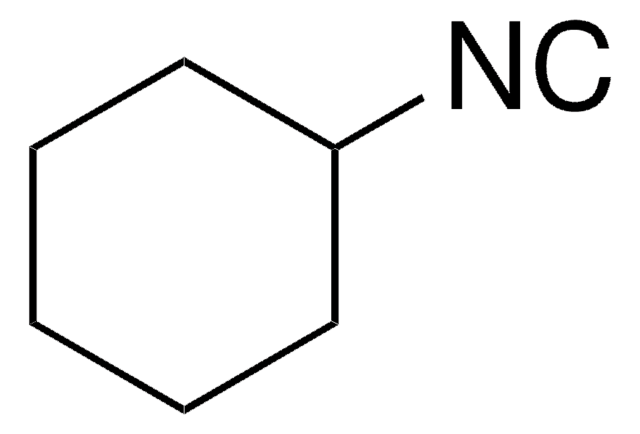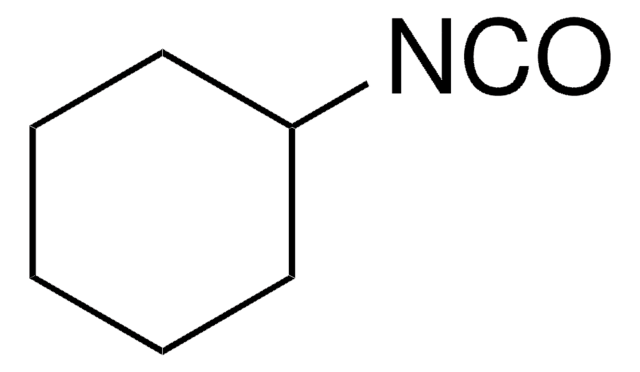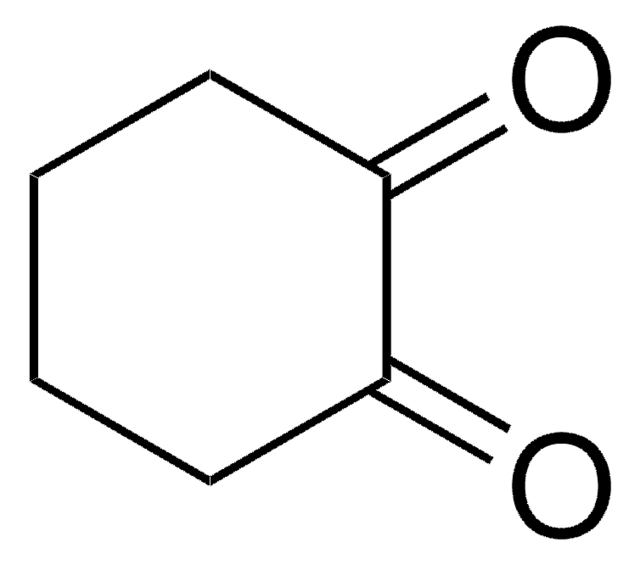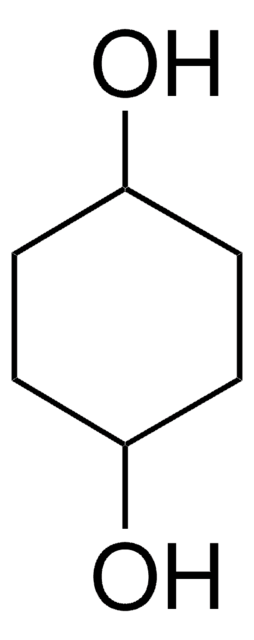144452
tert-Butyl isocyanate
97%
Synonym(s):
2-isocyanato-2-methylpropane
About This Item
Recommended Products
Quality Level
Assay
97%
form
liquid
refractive index
n20/D 1.386 (lit.)
bp
85-86 °C (lit.)
density
0.868 g/mL at 25 °C (lit.)
functional group
amine
isocyanate
SMILES string
CC(C)(C)N=C=O
InChI
1S/C5H9NO/c1-5(2,3)6-4-7/h1-3H3
InChI key
MGOLNIXAPIAKFM-UHFFFAOYSA-N
Looking for similar products? Visit Product Comparison Guide
Related Categories
General description
Application
- In the preparation of isocyanate-treated graphite oxides (iGOs) which can be exfoliated in polar aprotic solvents to obtain graphene oxide nanoplatelets.
- To modify metal-organic frameworks, postsynthetically, to obtain microporous urea-functionalized frameworks.
- To the synthesis of terminal hydroxide containing dinuclear alumoxane from aluminum dihydride.
Signal Word
Danger
Hazard Statements
Precautionary Statements
Hazard Classifications
Acute Tox. 1 Inhalation - Acute Tox. 4 Oral - Flam. Liq. 2 - Resp. Sens. 1 - Skin Corr. 1B - Skin Sens. 1 - STOT SE 3
Target Organs
Respiratory system
Supplementary Hazards
Storage Class Code
3 - Flammable liquids
WGK
WGK 1
Flash Point(F)
24.8 °F - closed cup
Flash Point(C)
-4 °C - closed cup
Personal Protective Equipment
Choose from one of the most recent versions:
Already Own This Product?
Find documentation for the products that you have recently purchased in the Document Library.
Customers Also Viewed
Our team of scientists has experience in all areas of research including Life Science, Material Science, Chemical Synthesis, Chromatography, Analytical and many others.
Contact Technical Service














